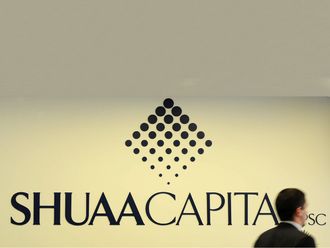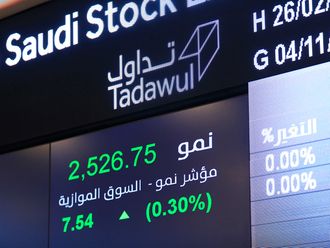London: When Jonathan Hook, chief investment officer at the Harry and Jeanette Weinberg Foundation, appears before the board to push investments in hedge funds, he chooses his words carefully.
“We wanted to consciously not use that term, ‘hedge funds,’” said Hook, who has poured 30 per cent of the foundation’s $2.2 billion into the investments, up from less than 10 per cent three years ago. “People clearly know they are hedge funds, they know the fee structure, but we tend not to use that term with the board.”
Hook is among a growing number of investors seeking to sidestep public scepticism of hedge funds. The rap — fair or not — is that managers charge high fees to enrich themselves regardless of performance. To lure pension plans, some firms like AQR Capital Management and Goldman Sachs Group Inc. are offering cheaper and more passive strategies. Many are trying new terminology.
“We call them marketable alternatives,” said Jonathan Miles, a managing director at Wilshire Associates who leads the hedge fund advisory group. “For us, the term ‘hedge fund’ doesn’t mean anything. It refers more to a legal structure than an investment strategy.”
Misnomer
Aberdeen Asset Management considers the term to be a misnomer. Some money managers have the hedge-fund fees and legal structures, but they don’t actually hedge, said Darren Wolf, head of the firm’s Americas Alternative Investment Strategies unit — which until about a year ago was called Hedge Fund Solutions.
“Nowadays, many hedge funds offer other attractive diversifying strategies like reinsurance, direct lending or speciality finance,” Wolf said. “So the term ‘hedge fund’ isn’t a defined asset class anymore.”
Other investors have switched to hedge fund lookalikes. Late last year, the Teacher Retirement System of Texas said it would reduce the number of active managers it uses in favour of “risk premia,” cheaper products that use quantitative strategies and supposedly mimic hedge-fund performance.
The California State Teachers’ Retirement System, known as Calstrs, started putting money into what it calls “risk-mitigating strategies” three years ago. Those hedge fund-like pools, combined with Treasuries, now make up 9 per cent of the pension’s $225 billion under management.
“It’s a hedge against the rest of the portfolio for us,” Calstrs Chief Investment Officer Chris Ailman said in a November interview on Bloomberg Television. Ailman has been a harsh critic of hedge funds and their high fees. “We don’t think hedge funds are an asset class,” he said in the interview.
Increased demand
Regardless of what the copycat investments are called, increased demand has motivated more money managers — even hedge funds — to offer them. And the market turmoil this month may make hedges even more desirable.
Man Group, the world’s largest publicly traded hedge-fund firm, raised more than $2 billion last year for alternative risk premia investments. AQR, which started as a hedge fund in 1998, raised money for similar bets at the end of last year. Goldman Sachs also created investments to replicate hedge-fund performance. One of Goldman’s funds, the GS Absolute Return Multi-Asset Fund, with more than $30 million in assets, rose 4.11 per cent in 2017.
Negative feelings
Management fees for the hedge fund-like products are typically about 1 per cent, and the performance fees range from zero to 10 per cent, according to Aon Plc. That’s more than investors would pay for passive index funds, such as ETFs, but still less than hedge funds, which usually require a 2 per cent management fee and also take a 20 per cent cut of the profits.
The alternative offerings allow investors to make similar bets without the negative feelings that hedge funds invoke, said Russell Barlow, head of Global Alternative Investment Strategies at Aberdeen.
“It’s cheap, it’s liquid and it’s not called a hedge fund,” Barlow said.
But investors will still seek hedge-fund managers for strategies that are harder to replicate, like merger arbitrage and distressed debt, said Kent Clark, a portfolio manager at Goldman Sachs’s investment management division.
Rough year
Hedge funds had a rough 2017. On average, they gained almost 7 per cent, trailing the 22 per cent gain in the S&P 500 index, according to Hedge Fund Research. The average equity hedge fund hasn’t beaten the stock market since 2008.
The opportunity lies in finding specific managers that are outliers from the pack, according to Miles of Wilshire Associates.
“There are funds doing very unique things that you can’t get anywhere else,” he said. “Those are worth paying for.”
And their returns are keeping investors like the Weinberg Foundation around. Hook’s hedge-fund bets helped drive a 15 per cent gain last year.
The Owings Mills, Maryland-based organisation is still taking pains to avoid saying those two words out loud. They reorganised their investment categories, eliminating a separate group for hedge funds. Now the funds are referred to more broadly as “global credit” or “global equity” investments.
“A lot of that was to try to explain what we’re doing and why we’re doing it,” Hook said. “We wanted to be more specific on the type of exposure we want to get from the fund, rather than saying it’s a hedge fund and people not getting what that means. We just take the name out of it.”












